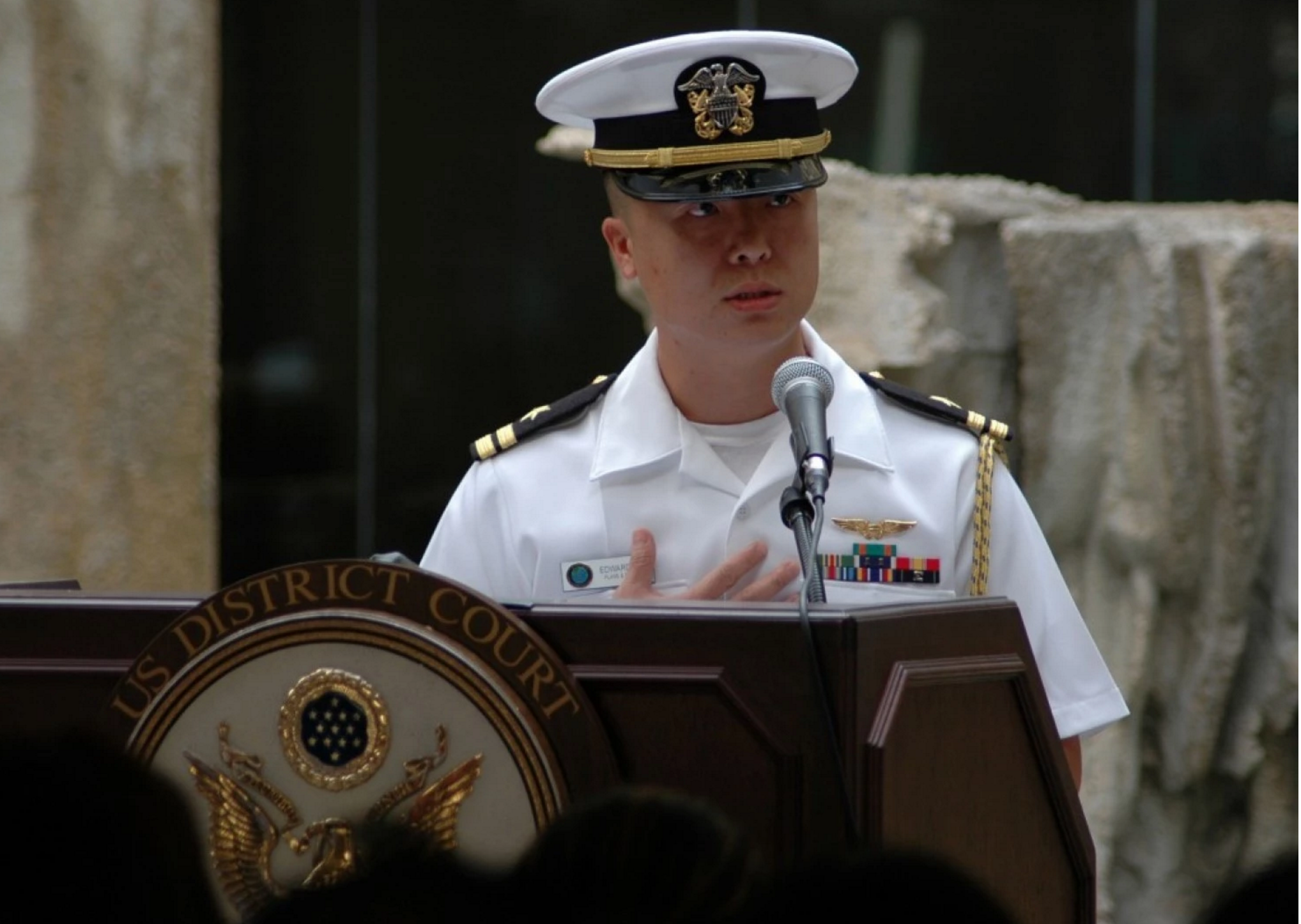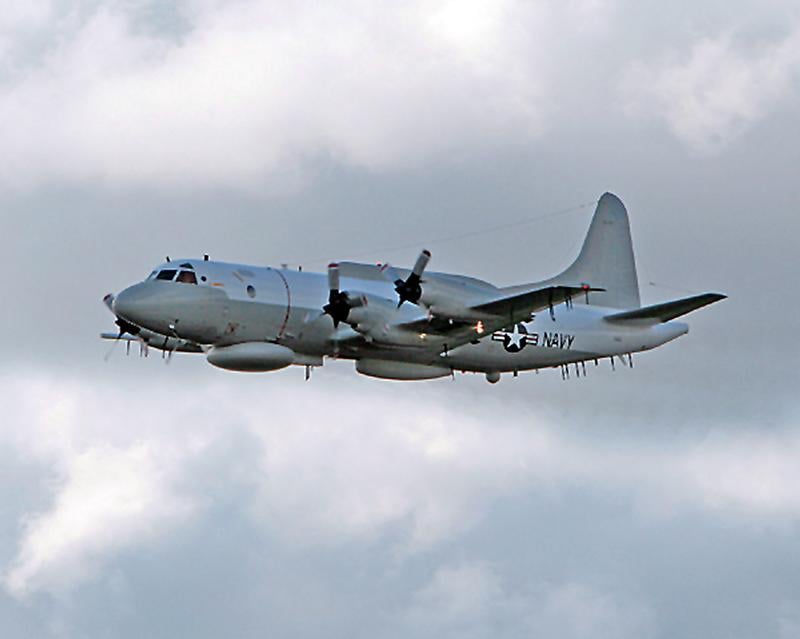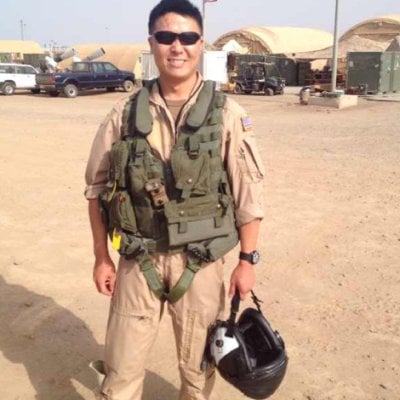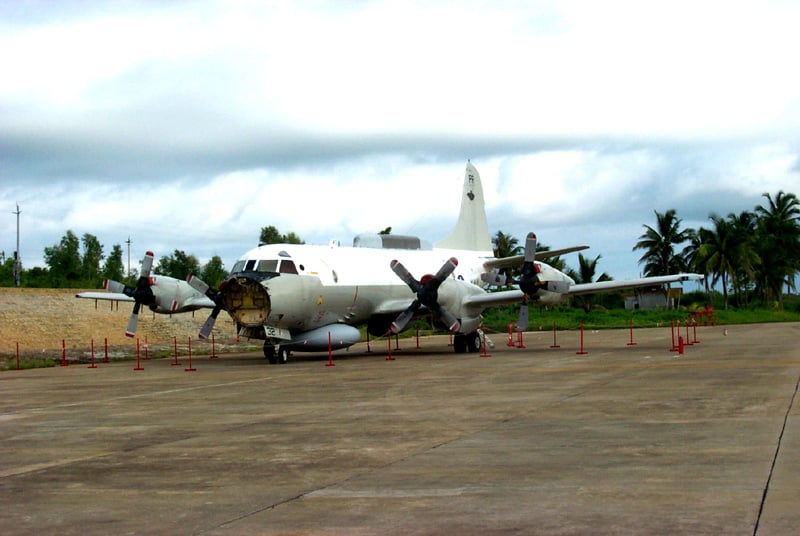
The naval flight officer accused by the Navy of giving secrets to China was a trained enlisted nuclear specialist prior to his time as a surveillance expert, USNI News has learned.
Before Lt. Cmdr. Edward Chieh-Liang Lin, 39, joined the small community flying the service’s most secretive aircraft, he was a sailor who enlisted in 1999. Following basic training, Lin attended the Navy’s nuclear training schools in Charleston, S.C. from March of 2000 to February of 2002.
Later that month, Lin was enrolled as a student in the Navy’s Officer Candidate School and commissioned on May 10, 2002, according to Lin’s official Navy biography obtained by USNI News on Monday.
There’s no evidence that Lin, originally from Taiwan, served as an enlisted nuclear specialist on a ship or a submarine before he attended OCS.
Following OCS, Lin spent two years moving through the Navy’s signals intelligence and aviation pipeline to reporting to his first operational deployment Fleet Air Reconnaissance Squadron ‘World Watchers’ (VQ-1) at Naval Air Station Whidbey Island, Wash. on June 30, 2004.
The World Watchers fly Lockheed Martin EP-3E Aries II signals intelligence aircraft that gather information on the capabilities of potential adversaries, Bryan Clark, naval analyst Center for Strategic and Budgetary Assessments (CSBA) and former special assistant to past Chief of Naval Operations Adm. Jonathan Greenert, told USNI News on Monday.
Sources told USNI News that Lin spoke fluent Mandarin and was one of the onboard analysts that would be able to provide commanders real-time assessments of what the team onboard the Aries II learned from their monitoring.

Following his time with VQ-1, Lin was assigned to U.S. Pacific Fleet at Joint Base Pearl Harbor-Hickam, Hawaii as a staff aide from 2007 to 2009. During his time at PACFLT, Lin spoke at a U.S. naturalization ceremony about his dream as a child to eventually travel to America, according to a 2008 Navy release on the ceremony.
“Whether it is economical, political, social or religious reasons,” Lin said. “I do know that by becoming a citizen of the United States of America, you did it to better your life and the life of your family.”
In his speech, Lin said when he arrived at his first American school his Chinese name was so long and unpronounceable that he elected to go by the name of his mother’s dog — Eddy.
Following his time at Pearl, Lin served on the carrier USS Eisenhower (CVN-69) for a sea tour before attending the Naval War College in Newport, R.I. for two years, graduating in 2012.

Lin came to Washington, D.C. and served for a little under two years as the Congressional Liaison for the Assistant Secretary of Navy for Finance Management and Comptroller – the service’s chief civilian budgeting officer.
In 2014, Lin reported to the Special Projects Patrol Squadron Two ‘Wizards’ (VPU-2) at Marine Corps Air Base Kaneohe, Hawaii as a department head. The Wizards fly signals intelligence aircraft based on the EP-3E Aries II that for decades were classified as part of a so-called “black” or secret program. Lin was officially reassigned from the unit on March 25. The next entry in his official bio is the Naval Consolidated Brig Chesapeake, Va.
Sources told USNI News that Lin had spent eight months in pre-trial confinement before his Friday Article 32 hearing that outlined his charges that included instances of espionage, attempted espionage, adultery and prostitution.
What Lin Could Have Told China

While Lin had basic knowledge of the Navy’s nuclear power systems from his enlisted service, as well as the Navy’s budget practices, it was his time with the Aries II that would have been of the most interest to the Chinese.
“The stuff he knew as a nuclear power guy are engineering details that China could have obtained by other means,” Clark said.
“They would like to know the types of stuff a VPU guy would know.”
Damaging information to the U.S. would include, “What kind of Chinese systems they were looking for and listening to. Which ones were easier to detect and harder to detect what information did they gather and what did they assess from that information and what was the assessment.”
Lin position on the EP-3Es was that of a sensor coordinator – a supervisor that directed what the team on the aircraft were looking for, how to interpret the data and how to help guide military leaders on how to use the information, USNI News understands.
Knowledge of EP-3E operations and sensors — especially the specialized aircraft variants the Wizards flew -– would be critical to China to develop sensors that were harder for the U.S. to detect and could give the Chinese People’s Liberation Army an advantage in an all-out conflict.
“It’s mostly radars that they would be looking for,” Clark said.

In 2001, an EP-3E collided with a PLA Shenyang J-8 fighter off of Hainan Island in the South China Sea forcing the crew to land on Chinese soil.
China eventually returned the crew and the aircraft but not before it collected reams of data on how the aircraft and its crew did their jobs. The Hainan Incident likely prompted the Navy to retool much of how the EP-3Es did business and their equipment, Clark said.
Any edge of how the contemporary Aries IIs function could undo much of the work the Navy did to shore up its program following the crash at Hainan.
“That would be the kind of stuff I’m sure China that I would love to learn,” Clark said.





